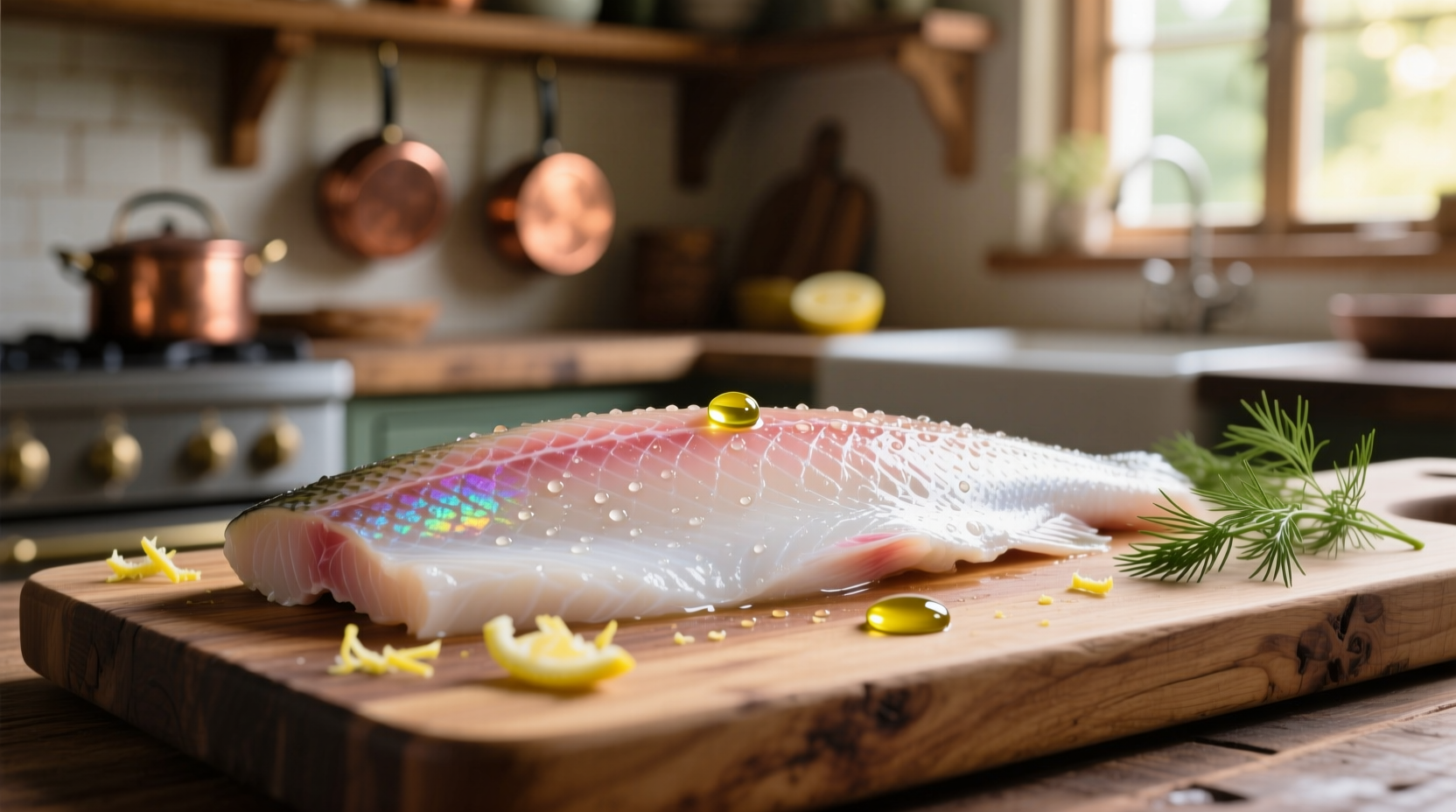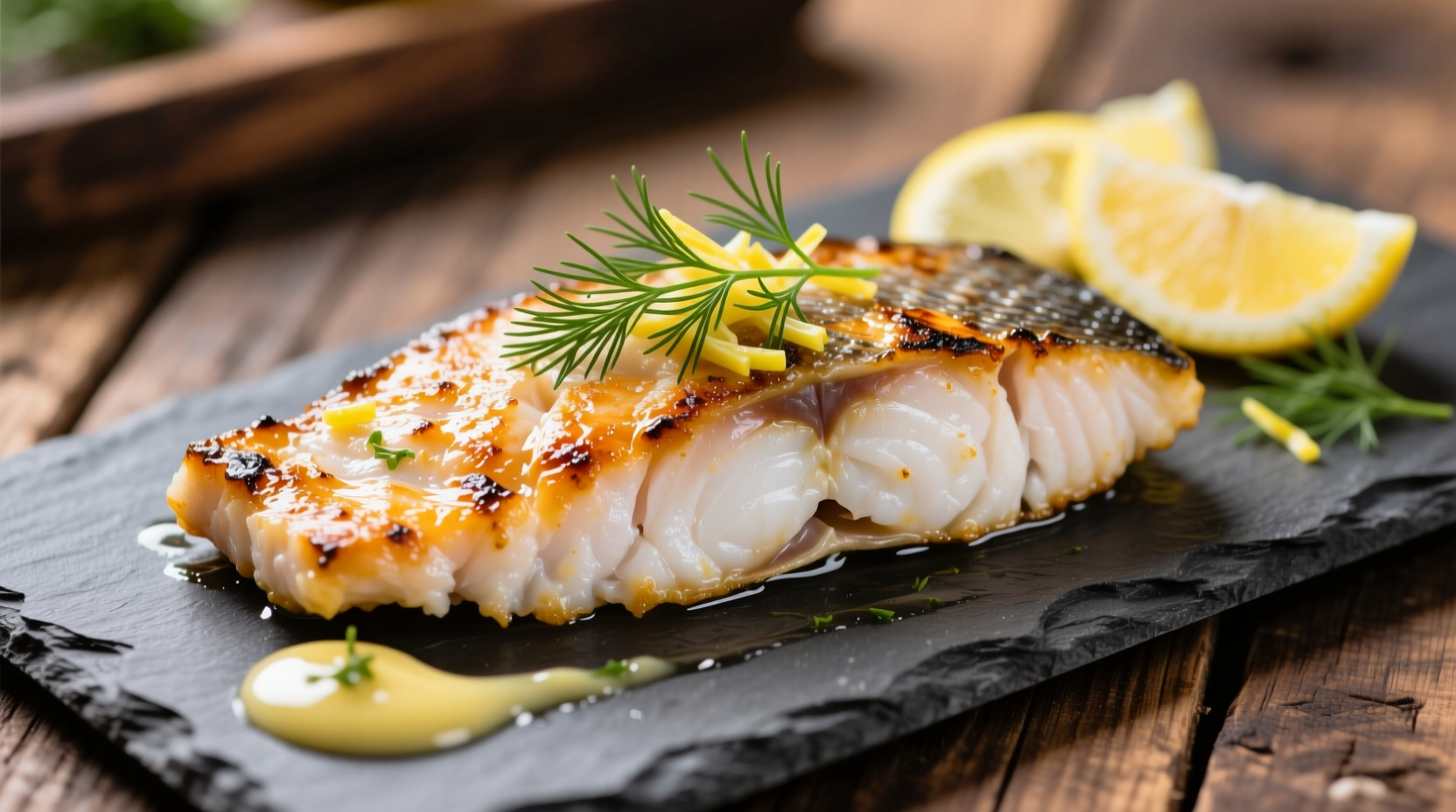If you've ever wondered what does sea bass taste like and whether it might become your new favorite seafood option, you're in the right place. This comprehensive guide breaks down the exact flavor profile, texture characteristics, and cooking considerations that make sea bass stand out from other popular fish varieties. Whether you're planning a special dinner or simply expanding your culinary knowledge, understanding sea bass's unique qualities will help you make informed choices at the market and in the kitchen.
Understanding Sea Bass Flavor Profile
Sea bass delivers a refined culinary experience that appeals to both seafood enthusiasts and those who typically avoid fish. Its flavor can be described as:
- Mild and delicate - significantly less "fishy" than salmon or mackerel
- Sweet undertones - a natural subtle sweetness that intensifies when properly cooked
- Buttery mouthfeel - thanks to its moderate fat content (about 2-3%)
- Clean finish - lacks the metallic aftertaste found in some other fish
Unlike stronger-flavored fish that can overwhelm accompanying ingredients, sea bass serves as a perfect canvas for complementary flavors. When cooked correctly, it develops a beautiful golden crust while maintaining moist, tender flesh inside. The texture is firm enough to hold together in recipes yet delicate enough to melt in your mouth.
| Fish Variety | Flavor Intensity | Sweetness Level | Texture | Best Cooking Methods |
|---|---|---|---|---|
| Sea Bass | Mild | Moderate | Firm yet tender, large flakes | Pan-searing, roasting, grilling |
| Salmon | Strong | Low | Rich, oily, flaky | Grilling, baking, smoking |
| Cod | Very mild | Low | Soft, delicate flakes | Frying, baking, poaching |
| Tuna | Moderate-strong | Low | Firm, meaty | Seared, grilled, raw preparations |
Factors That Influence Sea Bass Taste
Several elements affect what sea bass tastes like when it reaches your plate. Understanding these variables helps explain why your experience might differ between restaurants or cooking attempts.
Species Variations
The term "sea bass" actually refers to multiple species with distinct flavor profiles:
- European sea bass (Dicentrarchus labrax) - cleaner, more delicate flavor with subtle mineral notes
- Chilean sea bass (actually Patagonian toothfish) - richer, oilier texture with pronounced buttery qualities
- Black sea bass (Centropristis striata) - slightly stronger flavor with earthier notes
According to NOAA FishWatch, the Chilean sea bass contains approximately 12 grams of fat per 100-gram serving, contributing to its richer mouthfeel compared to European varieties which contain closer to 2-3 grams of fat per serving (NOAA FishWatch).
Wild vs. Farmed
Wild-caught sea bass typically has a more complex flavor profile due to varied natural diet, while farmed varieties offer more consistent texture and milder flavor. The Monterey Bay Aquarium's Seafood Watch program notes that responsibly farmed European sea bass maintains excellent flavor characteristics while reducing pressure on wild populations (Seafood Watch).

How Sea Bass Compares to Similar Fish
When home cooks ask what does sea bass taste like, they're often trying to understand how it compares to fish they already know. Here's how sea bass stacks up against common alternatives:
- Compared to cod: Sea bass has more pronounced flavor and firmer texture. While cod can sometimes taste bland, sea bass maintains its character even with minimal seasoning.
- Compared to halibut: Both have firm textures, but sea bass offers more buttery richness while halibut leans toward pure mildness.
- Compared to salmon: Sea bass lacks the strong fishiness and oiliness of salmon, making it more approachable for those who don't typically enjoy seafood.
Chef Thomas Keller, in his culinary reference "Under Pressure," describes sea bass as having "the perfect balance between richness and delicacy that makes it equally suitable for simple preparations or complex sauces."
Optimal Cooking Methods for Best Flavor
The way you prepare sea bass significantly impacts what sea bass tastes like in your final dish. These techniques maximize its natural qualities:
Pan-Seared Perfection
This method creates a beautiful crust while preserving the delicate interior. For best results:
- Dry the skin thoroughly before cooking
- Use medium-high heat with a combination of oil and butter
- Cook skin-side down first for 75% of cooking time
- Finish with a squeeze of lemon and fresh herbs
Temperature Matters
Overcooking is the most common mistake that ruins sea bass's delicate flavor. The USDA recommends cooking fish to an internal temperature of 145°F (63°C), but for sea bass, many chefs prefer 130-135°F (54-57°C) for optimal texture and moisture retention. At this temperature range, the flesh will be opaque but still slightly translucent in the center.
Perfect Pairings for Sea Bass
Certain ingredients enhance sea bass's natural flavor profile without overwhelming it:
- Citrus elements: Lemon, yuzu, or blood orange complement the mild sweetness
- Herbs: Tarragon, fennel fronds, and chives add aromatic complexity
- Butter-based sauces: Beurre blanc or browned butter highlight the fish's natural richness
- Wine pairings: Crisp white wines like Sancerre or unoaked Chardonnay
Avoid heavy spice blends that mask sea bass's delicate nature. Instead, focus on enhancing its natural qualities with simple, high-quality ingredients.
Common Misconceptions About Sea Bass Flavor
Several myths persist about what sea bass tastes like that might prevent people from trying it:
- "It tastes too fishy" - Actually, sea bass ranks among the mildest-flavored fish options
- "All sea bass is the same" - Different species and origins yield noticeably different flavor profiles
- "Frozen sea bass can't taste good" - Properly flash-frozen sea bass often surpasses fresh-in-transport quality
- "Sea bass is too expensive to cook at home" - Buying whole fish or off-peak can make it affordable
According to culinary research from the Culinary Institute of America, the perception of fishiness in seafood is often related to improper handling rather than the fish itself. Fresh sea bass should have a clean, ocean-like aroma with no ammonia or overly fishy smell.
Practical Tips for Selecting Quality Sea Bass
When shopping for sea bass, look for these indicators of freshness and quality:
- Bright, clear eyes (if purchasing whole fish)
- Firm flesh that springs back when pressed
- Moist appearance without dry spots or browning
- Clean ocean scent without strong fishy odors
- Ask about origin and whether it's wild-caught or responsibly farmed
For home cooks wondering what does sea bass taste like when prepared properly, the difference between high-quality and subpar sea bass is dramatic. Fresh, well-handled sea bass will reward you with its delicate sweetness and buttery texture, while compromised fish will taste bland or off.











 浙公网安备
33010002000092号
浙公网安备
33010002000092号 浙B2-20120091-4
浙B2-20120091-4